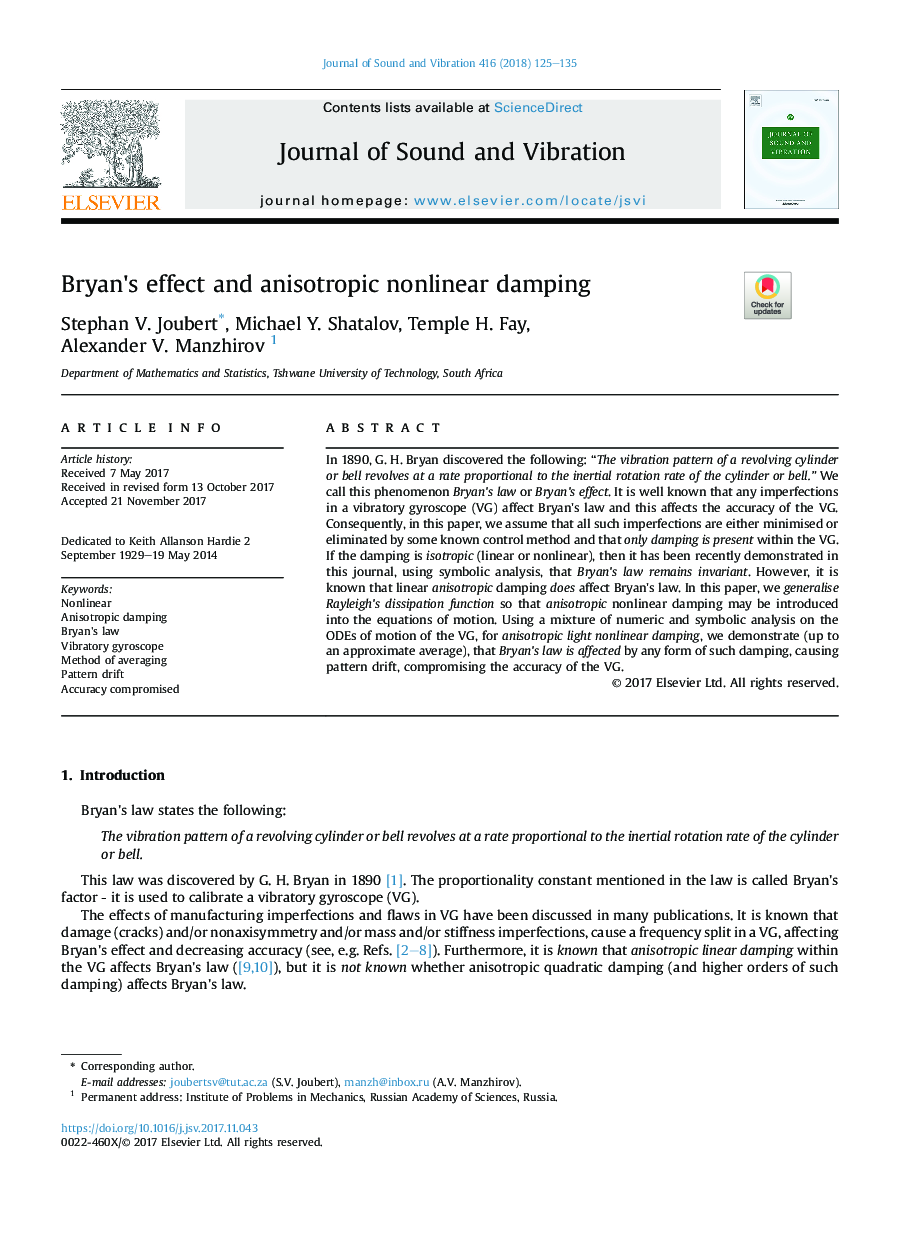| Article ID | Journal | Published Year | Pages | File Type |
|---|---|---|---|---|
| 6754010 | Journal of Sound and Vibration | 2018 | 11 Pages |
Abstract
In 1890, G. H. Bryan discovered the following: “The vibration pattern of a revolving cylinder or bell revolves at a rate proportional to the inertial rotation rate of the cylinder or bell.” We call this phenomenon Bryan's law or Bryan's effect. It is well known that any imperfections in a vibratory gyroscope (VG) affect Bryan's law and this affects the accuracy of the VG. Consequently, in this paper, we assume that all such imperfections are either minimised or eliminated by some known control method and that only damping is present within the VG. If the damping is isotropic (linear or nonlinear), then it has been recently demonstrated in this journal, using symbolic analysis, that Bryan's law remains invariant. However, it is known that linear anisotropic damping does affect Bryan's law. In this paper, we generalise Rayleigh's dissipation function so that anisotropic nonlinear damping may be introduced into the equations of motion. Using a mixture of numeric and symbolic analysis on the ODEs of motion of the VG, for anisotropic light nonlinear damping, we demonstrate (up to an approximate average), that Bryan's law is affected by any form of such damping, causing pattern drift, compromising the accuracy of the VG.
Keywords
Related Topics
Physical Sciences and Engineering
Engineering
Civil and Structural Engineering
Authors
Stephan V. Joubert, Michael Y. Shatalov, Temple H. Fay, Alexander V. Manzhirov,
